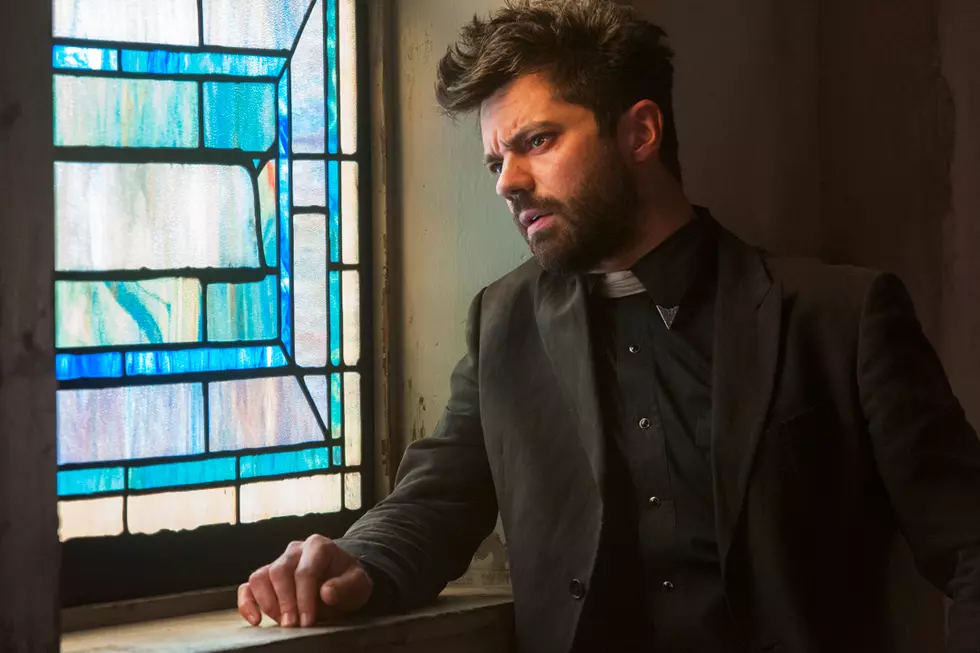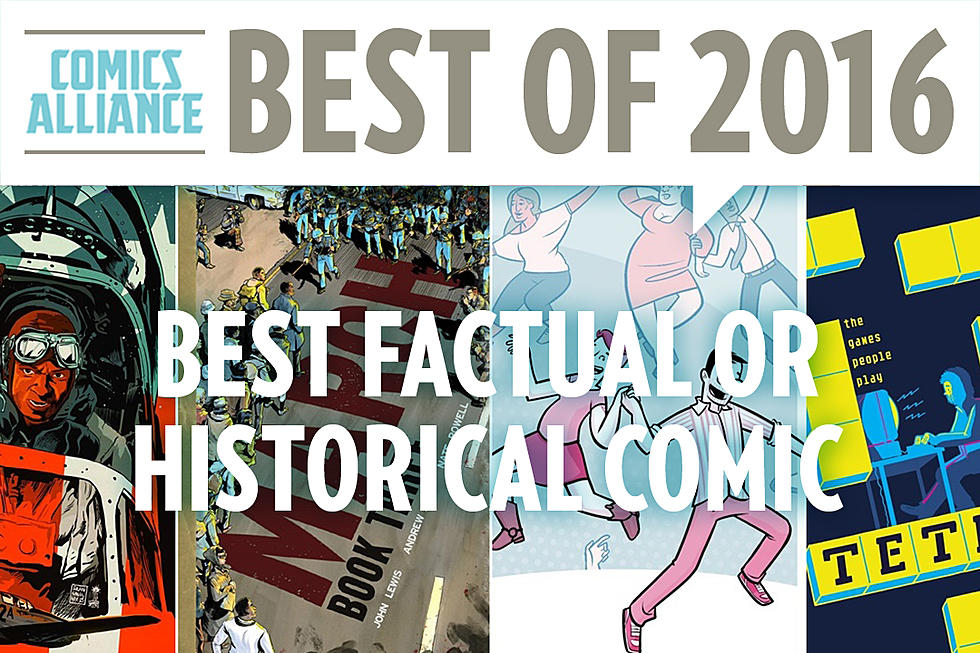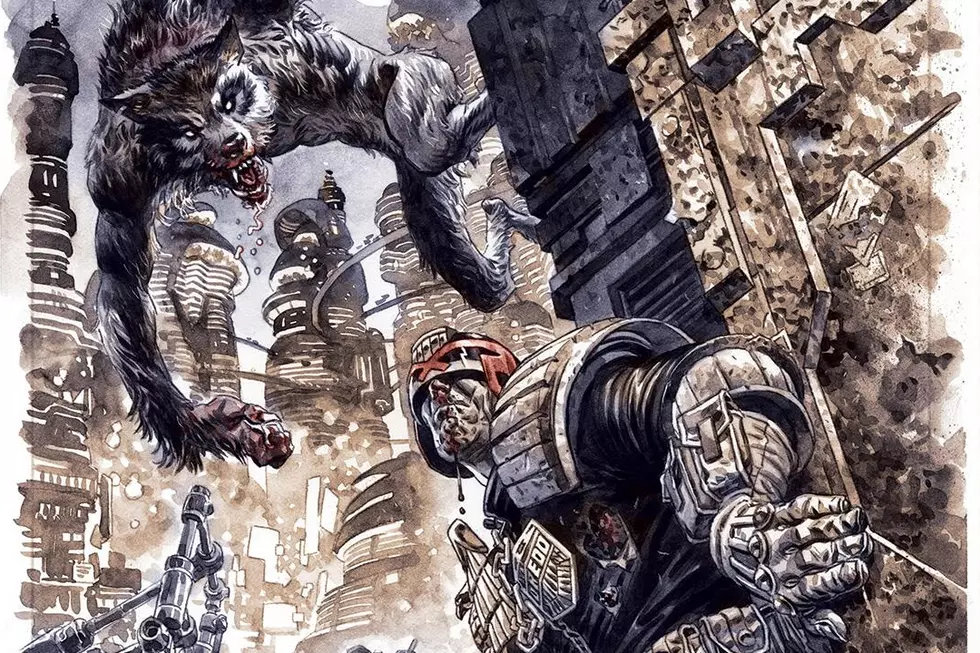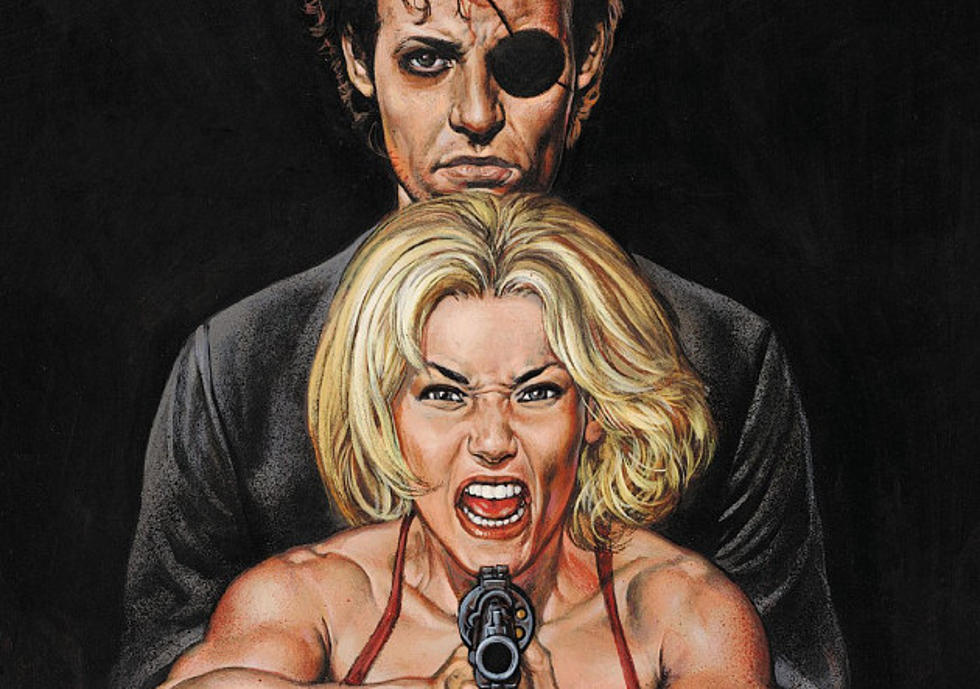
Preacher Ma’am: How Does ‘All Hell’s A-Coming’ Hold Up Today?
As someone who thought she was a dude in the late 1990s, Preacher was the comic I looked forward to every month more than any other. As someone who knows she isn’t a dude in the mid-2010s, I’m looking back on this series and examining what still works, what doesn’t work, and what its lasting legacy is.
In the eighth Preacher collection, All Hell's A-Coming, Garth Ennis and Steve Dillon --- with colors by Pamela Rambo and Patricia Mulvilhill, and letters by Clem Robbins --- start gathering their plot threads together; we finally get some backstory that helps illuminate a divisive major character, and we explore the dark side of the American dream of the second chance.
Reading a comic month-to-month is a different experience than reading it in trade, and I can tell you, at the time that I first read this series, waiting for Jesse and Tulip to find each other again was agony.
Ennis and Dillon stretched it out, like a steak sizzling for a year before it finally landed on your plate. Friends of mine who never usually got into things like true love and romance, were on the edge of their seat, saying, “They better get back together!” It was agony.
But it was the best kind of agony, the kind you experience with a smile on your face when you know that a story has its hooks in, and has you all the way to the end.
All Hell’s A-Coming opens with Tulip leaving Cassidy, then segues to an extended two-issue flashback to her origins and the events that set her on the path towards meeting Jesse. One of the points of contention about Preacher is about how Tulip’s character is presented, with some saying she’s underdeveloped, and others saying she’s the strongest character of the main trio. I think both can be true, and this flashback is the key to understanding why.
It’s a terrific flashback, some of the most efficient storytelling Ennis and Dillon do in all of Preacher. There is no narration; everything is told via dialogue, facial expressions, action, and background elements. This is a flashback where you can see Mr. O’Hare Sr reeling in a shark on one page, and see that he has a hook for a hand on the next…
... and that’s all you need to know. The story is shorter than the extended streak of misery that was Jesse’s childhood in Until the End of the World, and shorter than all the flashbacks to Cassidy’s long life add up to, but the story is no less complete.
And that’s the thing: the story is complete. Mr. O’Hare Sr figured out that the patriarchy existed, and tried his best to give his daughter a space away from it. When he passed, Tulip met Amy, now equipped with a mild aversion to dating and an extreme aversion to firearms --- one of which she gets over when she meets Jesse at the end of this story, and the other she gets over early in the series at the party with Jesus DeSade.
Tulip has basically figured herself out, in contrast to Jesse and Cassidy, who are still struggling with their demons. Her arc is done. It both serves her character well and undercuts it somewhat. On the one hand, if she is miles ahead of the other principals in terms of maturity and character growth, it makes her a stronger character; on the other, if she’s doing very little growing herself, it may make her a less interesting one.
Considering how much of the superhero is in Preacher, a character with an arc that is more of a stable orbit that goes through phases isn’t out of place --- the perpetual superhero comic does pretty well with that type of character. But Preacher isn’t wholly that kind of book --- at least, not for some --- so that's probably why Tulip resonates with some, and falls flat for others. It turns out the closest analogue to the superhero wasn’t the man with the red voice or the vampire who can lift a truck.
Meanwhile, Jesse goes through a delightful single issue of his own, picking up hitchhikers all looking to America for a second chance, including the return of Bob Glover and Freddy Allen (who are still a pair of stereotypes, but there’s signs of more going on there), Elvis Presley his damn self, and an ex-sex worker who had one big problem with the adult film industry:
Jesse and Tulip reunite, with all the beans spilled, and Jesse --- flawed as he is --- takes Tulip at her word straight away, even though she’s talking about his best friend. Jesse sets off learning about Cassidy’s past, seeing the patterns of addiction, manipulation, and abuse that have defined his entire life, and how he keeps getting away with it.
Preacher, being about America and about second chances, is all about forgiveness, but Cassidy is about the dark side of forgiveness --- how it can be used as permission to sin again. Time and again through the flashbacks, Cassidy is given a second chance and proceeds to waste it; people go, “Oh, those must have just been rumors, he’s such a nice guy, let’s give him one more shot,” and within a few pages, he’s at it again.
Forgiveness as an enabler, as a bad thing, is how Tulip let Cassidy stick around despite her better judgement, and it’s how he managed to ruin so many lives in the far-off days of the 1940s, as told to Jesse by Sally. It cuts deep, going against the saying, “To err is human but to forgive is divine,” but then again, Preacher never did have much time for divinity in general.
Throughout these flashbacks he’s sepia-toned, showing how Sally sees through him, and once he returns to the main storyline he’s the same color, depicted as lifeless and less than human.
If there’s any most sterling example of how good Dillon’s characters are at expressiveness, it’s the look on Tulip’s face when she sees Cassidy again, and her one thought is, “I am going to go and get my gun, right now.”
The most chilling thing about this scene is that even when confronted with Amy, Tulip and Jesse calling him on all of his sins, he genuinely doesn’t seem to be putting up a front when he asks what they mean when they call him a monster and an animal. He still doesn’t realize that the wrongs he's done them are things he has actually done, and things that are actually wrong. He still wants to go on being Jesse’s pal even after he almost kills him.
Cassidy may not turn into a bat or be vulnerable to a stake through the heart, but he has one quality in common with mythical vampires: he has no self-reflection.
Cassidy is chased off, Jesse and Tulip hit the road again, and we bid farewell to Amy Grinderbinder, who is my favorite minor character in Preacher. It’s never canonically stated that Amy is bisexual, but: Amy is bisexual as all hell.
It’s absolutely supported by the text, and it’s why I’m more or less happy that she has the worst luck in the world with her love life --- because despite all of this she is 100% trustworthy around both Jesse and Tulip, not even thinking about breaking them up beyond a moment of weakness in Tall in the Saddle.
Negative queer stereotypes inevitably feed back into “they’re untrustworthy,” and the stereotype of bisexual people that feeds into this is that they’re promiscuous (and therefore, you can’t trust them around your loved ones). So to see this subverted with Amy is nice, even if the last panel of her walking back alone is a little bit sad.
Rounding out the main storyline is Arseface’s fall from grace (Arsegrace?), which is as slight as ever, even if it gives the character a little more insight into why, despite having everything, Kurt Cobain committed suicide. There’s also Starr’s last struggle for control of the Grail, leading to him losing his final body part, which doesn’t really work for me any more, even if I did laugh at it when I was a lot younger.
Finally, there’s the one-shot, Tall in the Saddle, which has a very noteworthy visual distinction: the pencils are by Dillon, but inking duties are handled by John McCrea, another frequent Ennis collaborator.
If you want an example of how much inking affects the tone of a book, there are few better examples. Everything is a bit more cartoony and youthful, as befits the subject matter of the adventures of Jesse, Tulip and Amy in their youth. It’s a fun, if consequence-free, diversion from the main storyline, which is heading into its final stretch.
This column is also heading into its final stretch, with one more collection to go before Preacher’s finale, and there will be a lot to talk about.
All in two weeks’ time. See you then.
More From ComicsAlliance
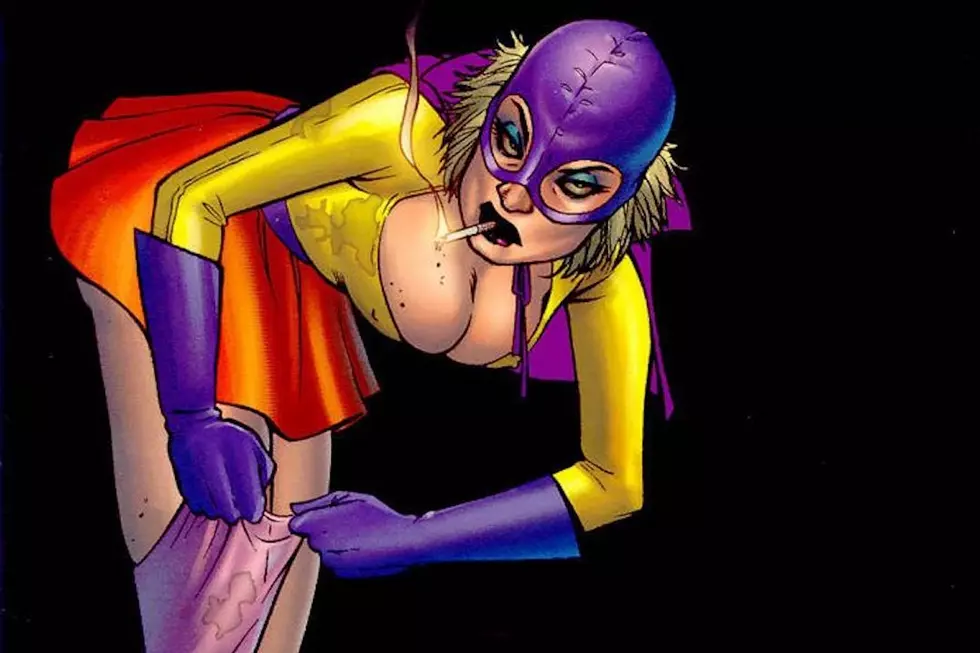


![NECA Pits Aliens Against Batman, Turtles Against Terminators And More [Toy Fair 2017]](http://townsquare.media/site/622/files/2017/02/IMG_2656.jpg?w=980&q=75)
